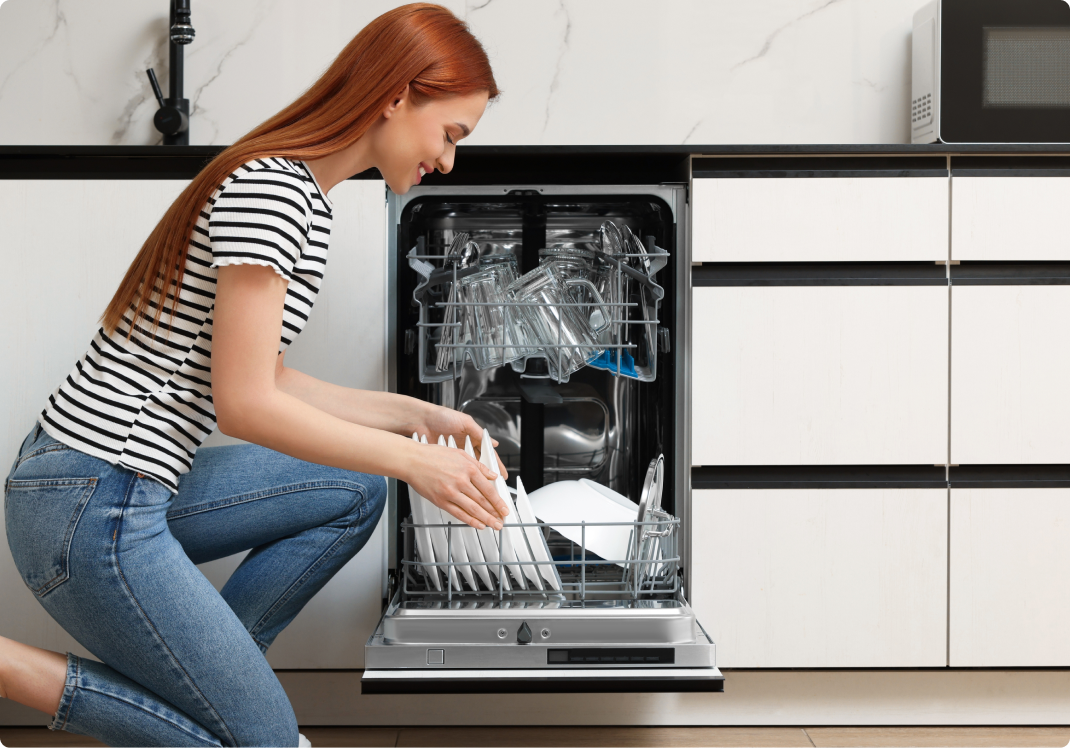Dishwasher Won’t Drain? Eight Steps to Fix It

Is your dishwasher not draining properly? Before you call a plumber, follow these easy steps to see if the problem can be solved without the help of a professional.


Is your dishwasher not draining properly? Before you call a plumber, follow these easy steps to see if the problem can be solved without the help of a professional.
One of the most common problems reported to plumbers by homeowners is when a dishwasher won’t drain. While it can be scary to open the dishwasher door and see standing water at the bottom, it isn’t always a plumbing emergency. In fact, you may be able to correct a clogged dishwasher yourself without professional help.
The first step before attempting any of the solutionssolves below is to clear the standing water at the bottom of your dishwasher. Here’s how to drain a dishwasher:
If draining your dishwasher is an issue, here are eight simple techniques to try at home.
A full garbage disposal or an air gap in a connecting hose can prevent water from properly draining out of the dishwasher. Simply running the disposal for about 30 seconds may fix the issue.
Check the bottom of the dishwasher to make sure that an item or pieces of food haven't fallen from the rack to block the water flow.
When you have a clogged dishwasher, make sure you’re loading the dishwasher correctly. Read the manufacturers’ instructions or owner’s manual for tips and directions on how to load dishes for best results.
When your dishwasher won’t drain, you may have a clogged dishwasher filter. Many homeowners don’t realize that dishwasher filters need to be cleaned regularly. Check your owner’s manual to see where the filter is located on your dishwasher, and for instructions on how and when to clean it. For many dishwashers, the filter can be found on the inside bottom of the appliance.
Thinking about coverage?
Security for your home. Protection for your budget.
Check the drain hose connecting to the sink and garbage disposal. Straighten any kinks that you may see, which could be causing the problem. Blow through the hose or poke a wire hanger through to check for clogs. Make sure the hose seal is tight, too.
Inspect the drain valve found on the valve bracket, often located at the bottom of the machine. Push on the valve to make sure it moves freely and isn’t stuck.
Mix together about one cup each of baking soda and vinegar and pour the mixture into the standing water at the bottom of the dishwasher. Leave for about 20 minutes. If the water is draining or starting to drain at that time, rinse with hot water and then run the dishwasher’s rinse cycle. That may be enough to help loosen any clogs or debris that are preventing the dishwasher from draining properly.
Listen to your dishwasher while it’s running a cycle. If it doesn’t make the usual operating sounds, particularly if it’s making a humming or clicking noise, the drain pump and motor may need replacing. If this occurs, it may be time to call a professional for help.
Taking some preventative steps to keep your dishwasher running smoothly can also help you avoid drainage issues in the future.
Want to make sure that your dishwasher stays in great working order? American Home Shield Shield Gold and Shield Platinum plans include coverage for the key systems and appliances you rely on to help keep your home running smoothly, including your dishwasher. When a covered item breaks down, you only have one company to reach out to get it repaired or replaced. We’ll even find the Pro for the job that can assist with routine dishwasher maintenance by covering repairs or replacements of key components that may wear out or malfunction over time. An American Home Shield home warranty plan helps ensure that your systems and appliances continue to run efficiently and we handle the repair costs for your covered items. It’s a great way to have peace of mind and avoid expensive repair costs.
See how a home warranty plan steps in when your dishwasher’s not doing its job.

AHS assumes no responsibility, and specifically disclaims all liability, for your use of any and all information contained herein.
Have a plan for your home when things don't go according to plan
Shop Home Warranties